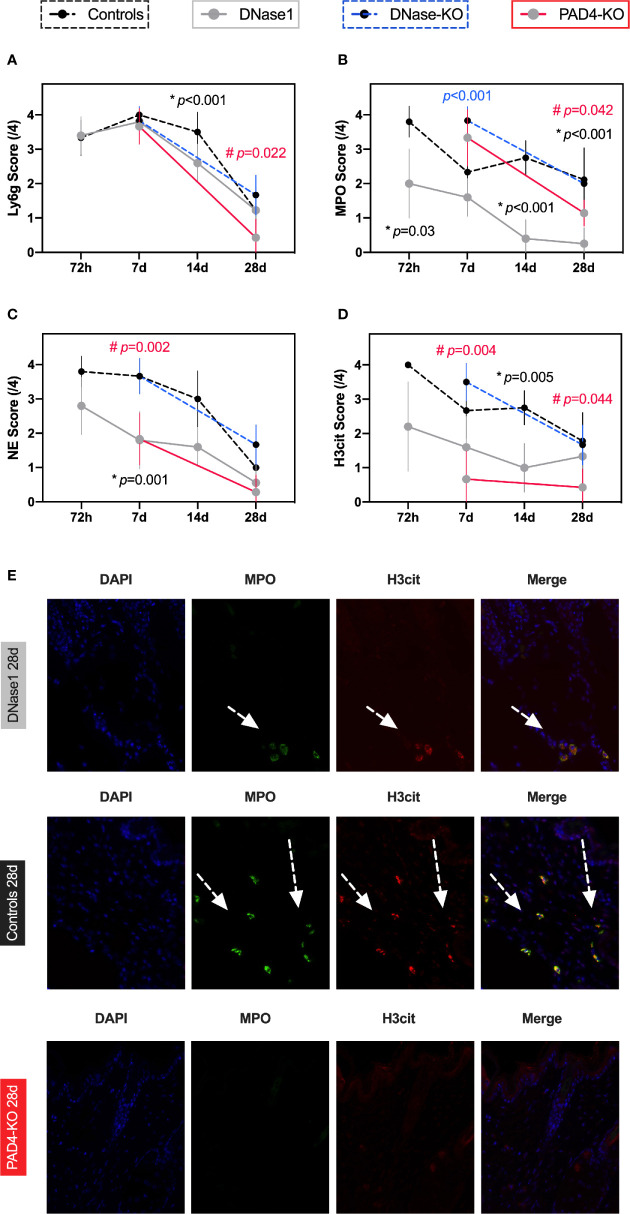Figure 4.
Therapeutic targeting of NETs reduces neutrophil activation and NETs formation in a model of secondary intention wound healing. (A) Comparable Ly6G levels indicate that granulocytes were not affected by DNase1 after thermal injury. However, in PAD4-KO mice a significant difference was found after 28 days, possibly indicating a loop effect of NETs and neutrophils. (B, C) Neutrophil activation remained high but was significantly lower in animals that received DNase1 or with limited NETs formation (Pad4-KO). (D) NETs formation can be significantly reduced by DNase1. (E) Representative immunofluorescence images. It appears that in burn wound neutrophils remain activated and produce NETs even after 4 weeks. DNase1 treatment is able to reduce this effect to some extent. Data shown as Mean ± SD. Comparison was performed always in comparison with controls. Statistics: mixed-effect model with Geisser-Greenhouse correction as well as Dunnett’s multiple comparison test. *DNase1 vs. controls. #PAD4-KO vs. controls.

